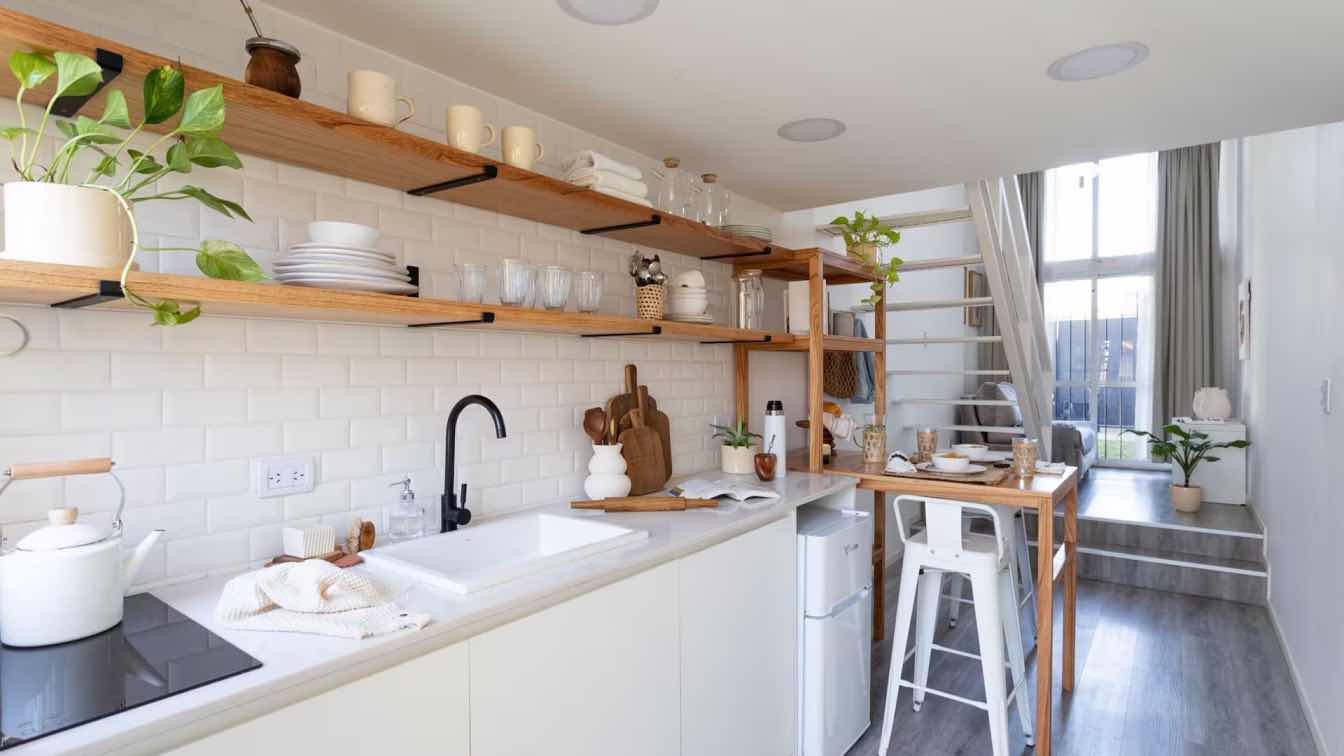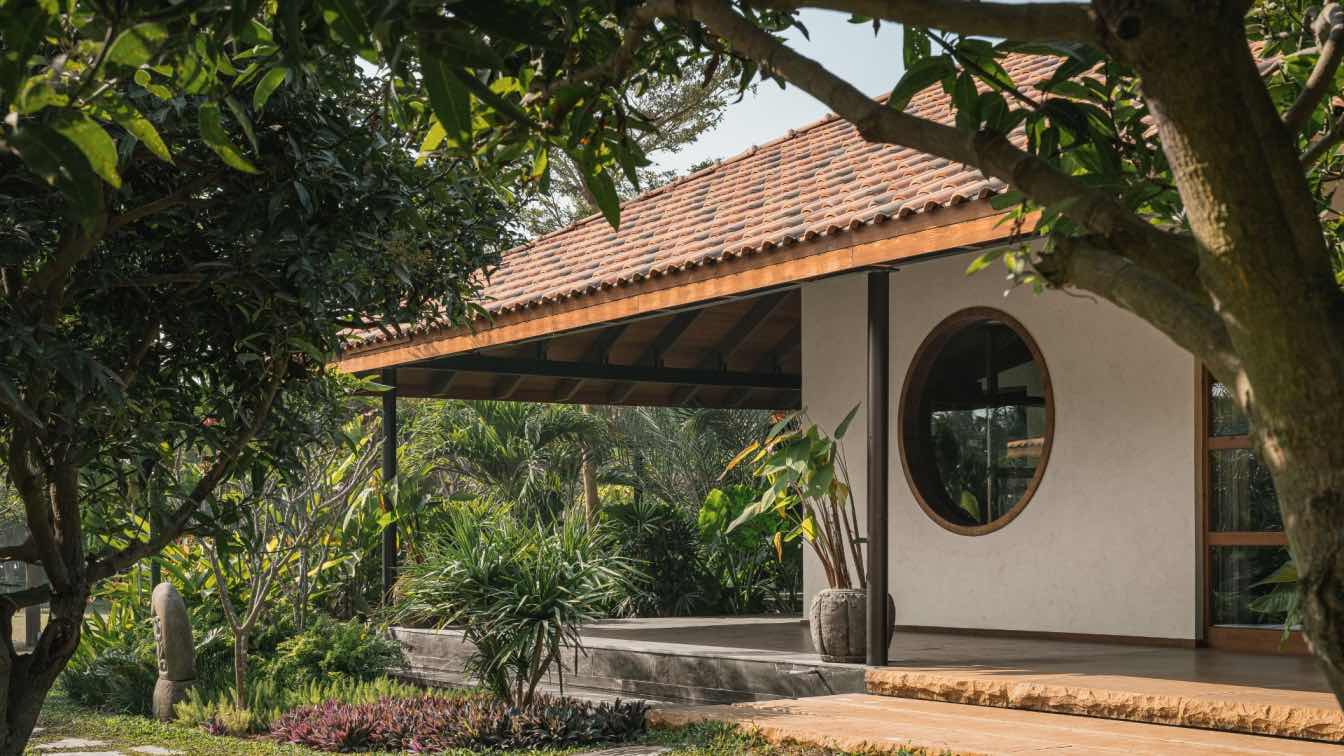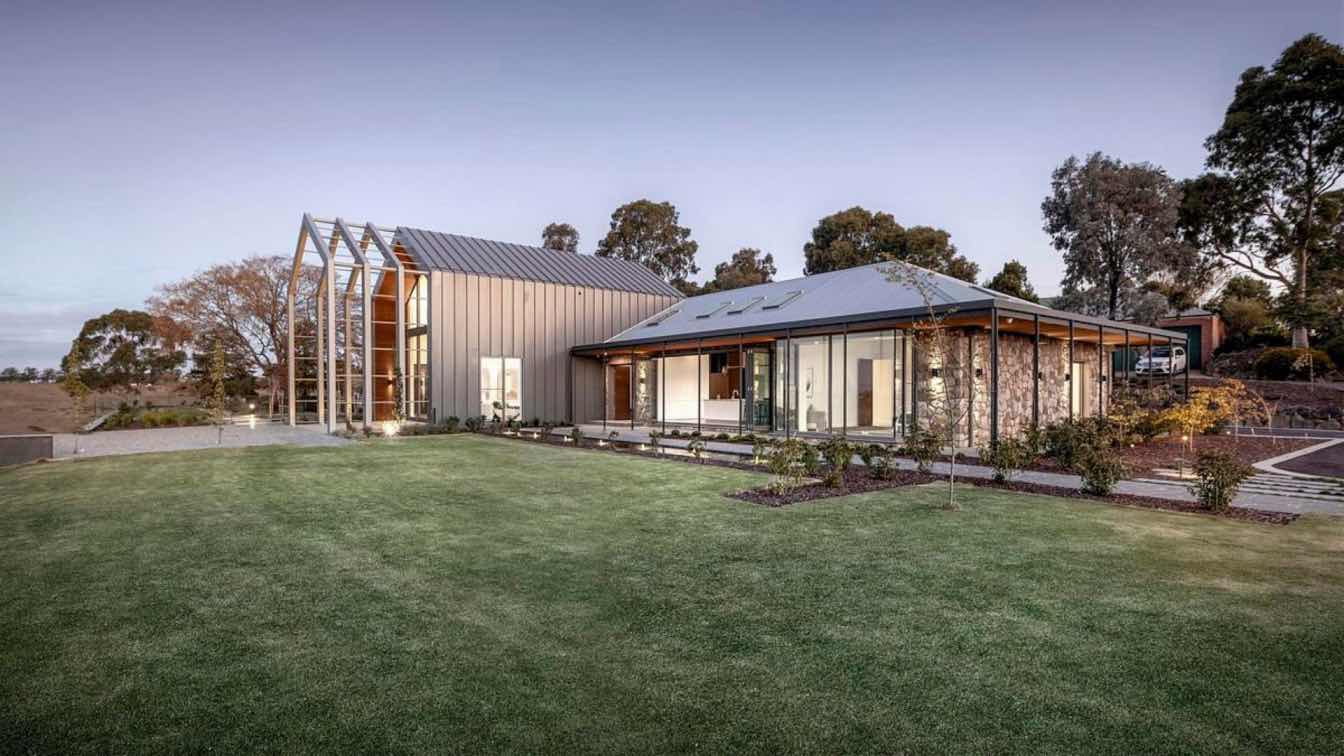Located on a plot within the Brazilian Cerrado, the 7 Trees House, developed by the Hersen Mendes Arquitetura firm, was designed to integrate indoor and outdoor spaces, providing shelter without losing connection with the surroundings.
"We want to enter the house and feel as if we are stepping outside," was the clients' request. With this premise, the project was based on the natural vegetation of the land—especially the trees, which were mapped, preserved, and incorporated into the architectural design. The residence's name honors the seven trees that guided its placement.
Taking advantage of the natural slope of the terrain, the house was positioned in the flattest area, gradually advancing as the gradient changes. In some sections, the structure stands out from the ground, creating a dynamic interplay of advancing and retreating in sync with the landscape. Soil permeability was prioritized to maintain the natural water flow and preserve local fauna and flora. During construction, moments of pollination were observed, reinforcing the harmony between the building and the environment.
At the highest point of the land, the resident's studio, dedicated to art and sewing activities, is completely suspended on two tree-shaped pillars. It connects to the social area of the house via a walkway with yellow metal louvers, which provide sun protection and contribute to the project’s identity.
In addition to integrating with nature, the project prioritized the use of local materials, such as eco-friendly bricks produced without firing, minimizing environmental impact and maintaining a dialogue with the cerrado. The house also features a photovoltaic energy system to complement its energy consumption.

Inspired by the organic spaces of Frank Lloyd Wright, the project aimed to create fluid and versatile environments without rigid boundaries. Some walls function both as interior and exterior elements, reinforcing continuity between indoor and outdoor spaces. The interiors were designed to accommodate a diverse curation of furniture and artworks. Natural materials, such as Beige Bahia marble flooring, along with earthy, green, and neutral-toned finishes, compose the house’s welcoming atmosphere.
A standout feature is the TV wall, suspended from the floor, which conceals a cabinet and is complemented by a fireplace at its base. Meanwhile, the bedroom headboard and kitchen counter volumes, which do not reach the ceiling, contribute to the spatial fluidity.
The library became a central element in the project. Rather than being an isolated room, it spreads throughout the house, with bookshelves distributed along the ground floor, allowing different reading spots to be chosen. The shelves are made of Corten steel, the same material used for the staircase and the lavatory door.
The lighting design was conceived to be functional and discreet: in the dining room, metallic strips direct light downward; in the TV room, lighting highlights the slab, creating a cozy environment.
Every detail was carefully planned to balance the natural and the built, resulting in a space that establishes a unique relationship between the house and the cerrado landscape.



























About Hersen Mendes Arquitetura
Anastácia Hersen and Matheus Mendes are architects recognized in Brasília, Brazil, and abroad, with a consolidated career in architecture, planning, and design.
Anastácia and Matheus met at the Faculty of Architecture at UNB and pursued distinct careers in the field. Their professional paths converged in 2016, combining complementary expertise to establish Hersen Mendes Arquitetura. The firm integrates all stages of planning, design, coordination, execution, and delivery of spaces and buildings in one place.
Both professionals stand out not only for the aesthetic and functional quality of their projects but also for their commitment to sustainable practices and innovation in contemporary architecture.
Among their most recent projects in Brazil are the renovation of the Official Residence of the British Embassy in Brasília; the design and construction of Casa das 7 Árvores, which preserves the existing cerrado vegetation; and the Apartamento dos Arcos, which won first place in the 2023 IAB Award by the Institute of Architects of Brazil in the Design and Interiors category.
Internationally, their notable work includes the renovation and requalification of Colégio Pio Brasileiro in Rome, Italy, as well as residential projects in Germany, Austria, and the Netherlands.





